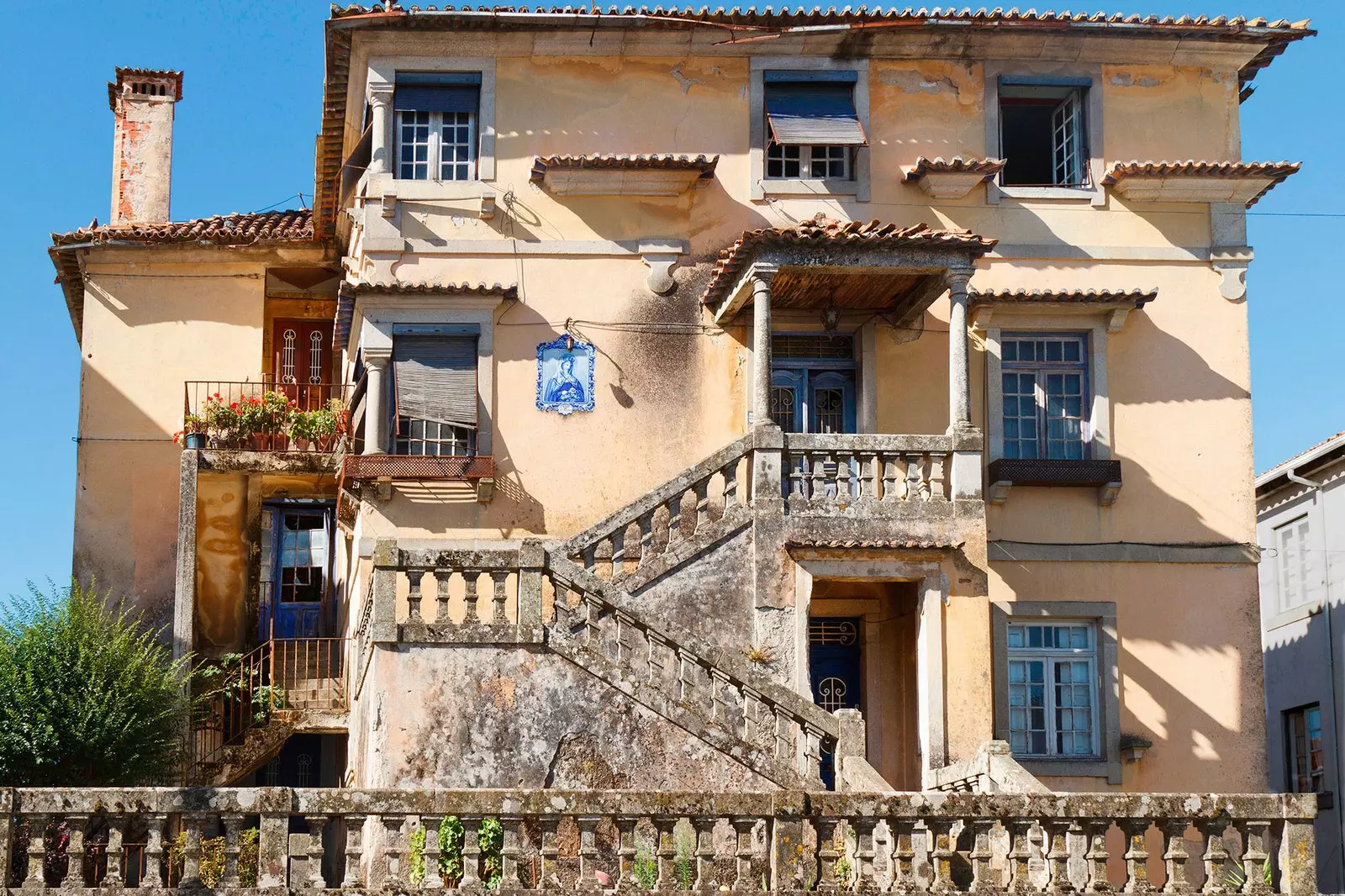
Viseu, or an ode to Portuguese life
In the Central region of Portugal, at a strategic intersection of roads between the Vouga and Dão rivers, just where you would place your eye on the Iberian Peninsula to complete its figurative face, is Viseu, a small town on the high plateau of Beira Alta in which it is worth getting lost in the tangle of its alleys to find yourself in the tranquility of its churches and in which the leisurely lifestyle is beginning to move to the rhythm of travellers.
WHAT TO SEE
Although technically not true, we could say that all the medieval streets of the historic center of Viseu lead to the Adro da Sé (Cathedral Atrium), because to reach this prominent and elevated point of the city you just have to look up and go up following the trail of the imposing towers that give the cathedral that strong and fortified appearance.
A few stairs up, a slope to the left, again a meandering turn to the side... Let yourself be carried away without maps or planning by the cobblestone floor of this former episcopal capital It is a most pleasant decision.
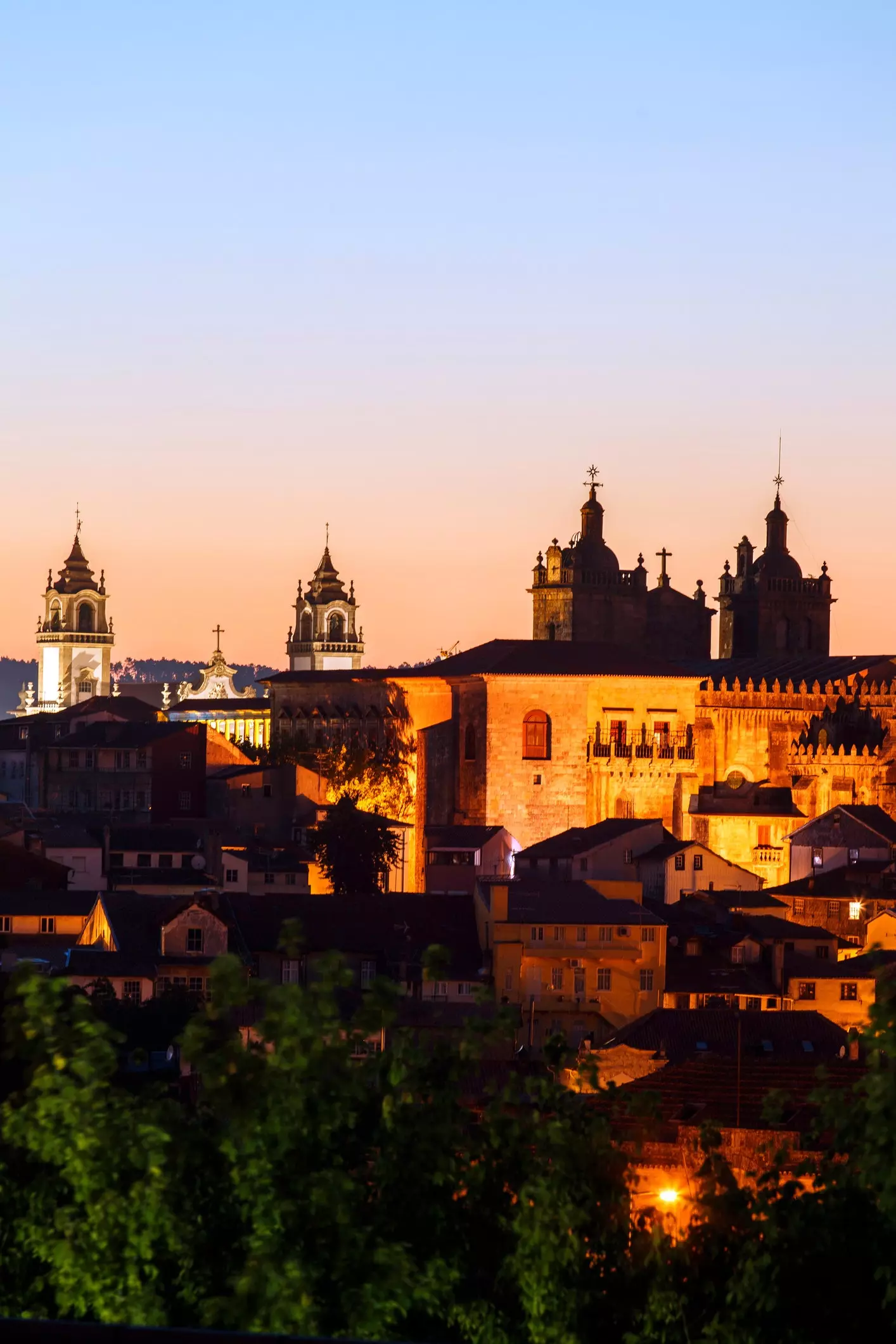
Viseu, crowned by the cathedral (right) and the Iglesia da Misericórdia (left).
In addition, this improvised tour will take us to discover the most picturesque places, from eating houses such as A parreira Do Minho (R. Direita 174) with one-dish menus for €5 (bacalhau à Brás, stewed lamb, pota tentacles à lagareiro…) until authentic craft shops, such as A Latoaria, which recovers the old work with brass. Buckets, watering cans, oil cans… genuine handmade pieces that remind us with their subtle shapes and silvery appearance that alternatives to plastic are not in the future, but in the past (Largo São Teotónio, 3500-115).
Once up, high above the city, highlights the robust mannerist facade of the cathedral, adorned with six niches with sculptures representing the four Evangelists, São Teotónio (its patron) and Senhora da Assunção and crowned by two bell towers (one medieval and the other from the 17th century).
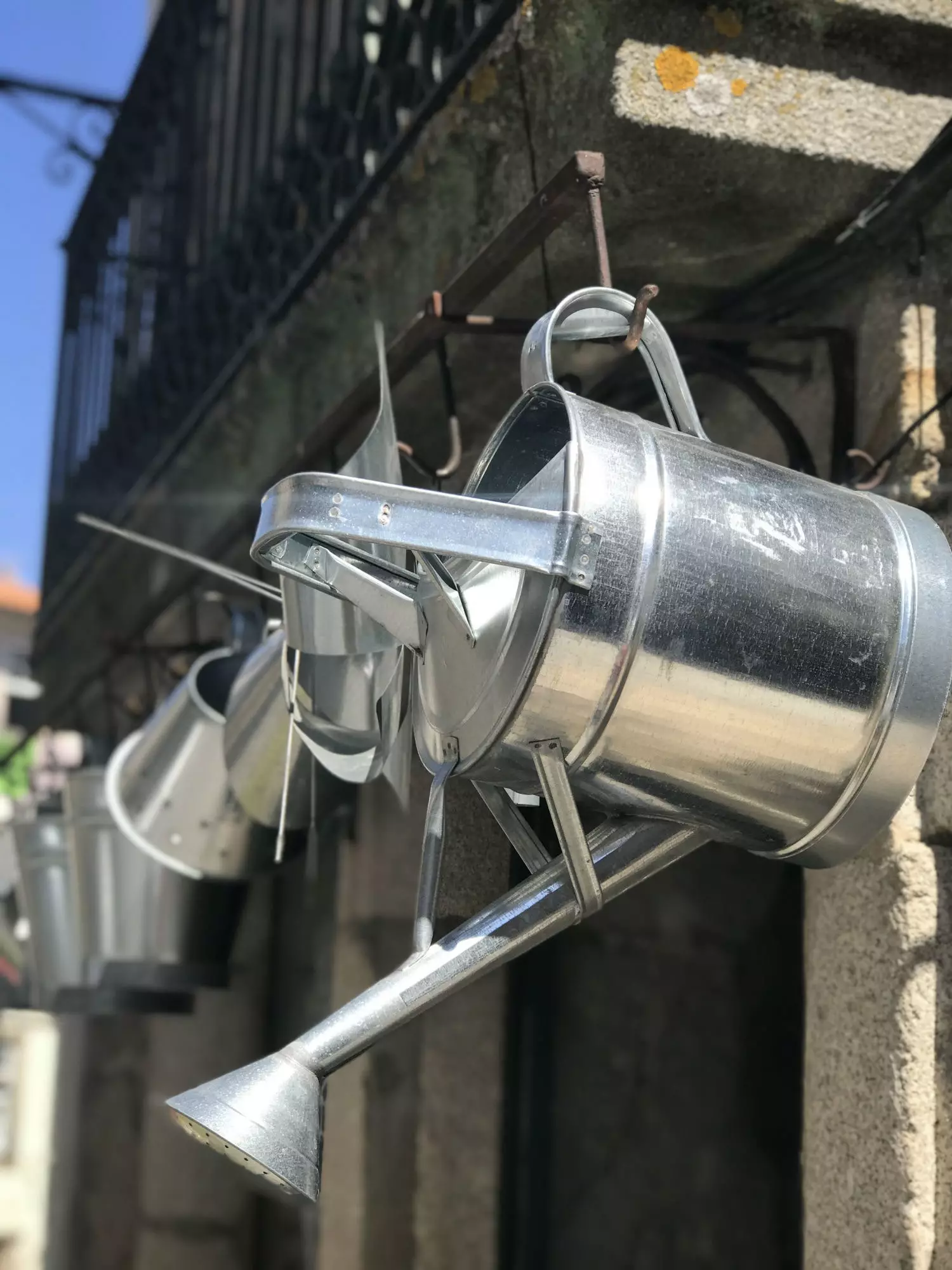
Brass pieces in the A Latoaria handicraft shop.
Although it is inside where the Sé keeps its biggest secret: the vaults of the knots of João de Castilho. Like knotted ropes, this consecrated Manueline architect used roped ribs and finished them off with Ançã stone rosettes bearing the emblems of the kings and the coats of arms of the bishops.
It was in the Baroque era that gilded carvings, paintings, and distinctive blue and white tile panels. The latter, present on the walls of the Renaissance cloister from the cathedral (also in the famous Plaza de la República, whose mural from the last century depicts typical rural scenes).
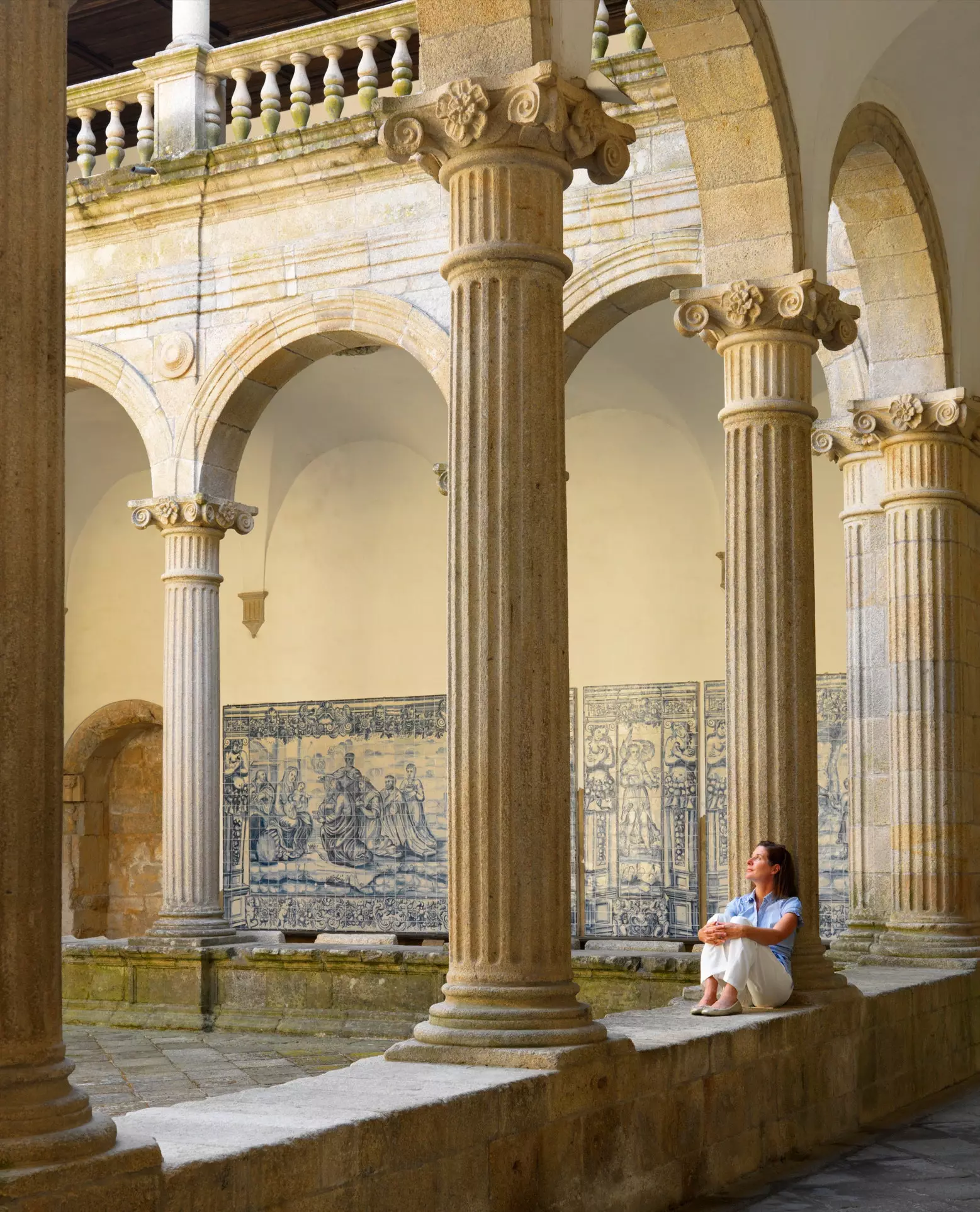
Tile mural in the Renaissance cloister of Viseu Cathedral.
Without having to leave Adro da Sé we find other places of interest: the Iglesia da Misericórdia, whose white facade contrasts with the black granite typical of the region used in the construction of the buildings, the Paseo dos Cónegos, a section of wall covered with a cantilever supported by columns and the Grão Vasco National Museum.
Located in the Paço dos Três Escalões, in what was the old seminary, the highlight of the collection of this museum dedicated to the 16th century Portuguese painter Vasco Fernandes, known as Grão Vasco, are the paintings of the altarpiece of the cathedral, as well as other churches in the region. There are also liturgical objects, pieces of archeology and pottery and Portuguese furniture.
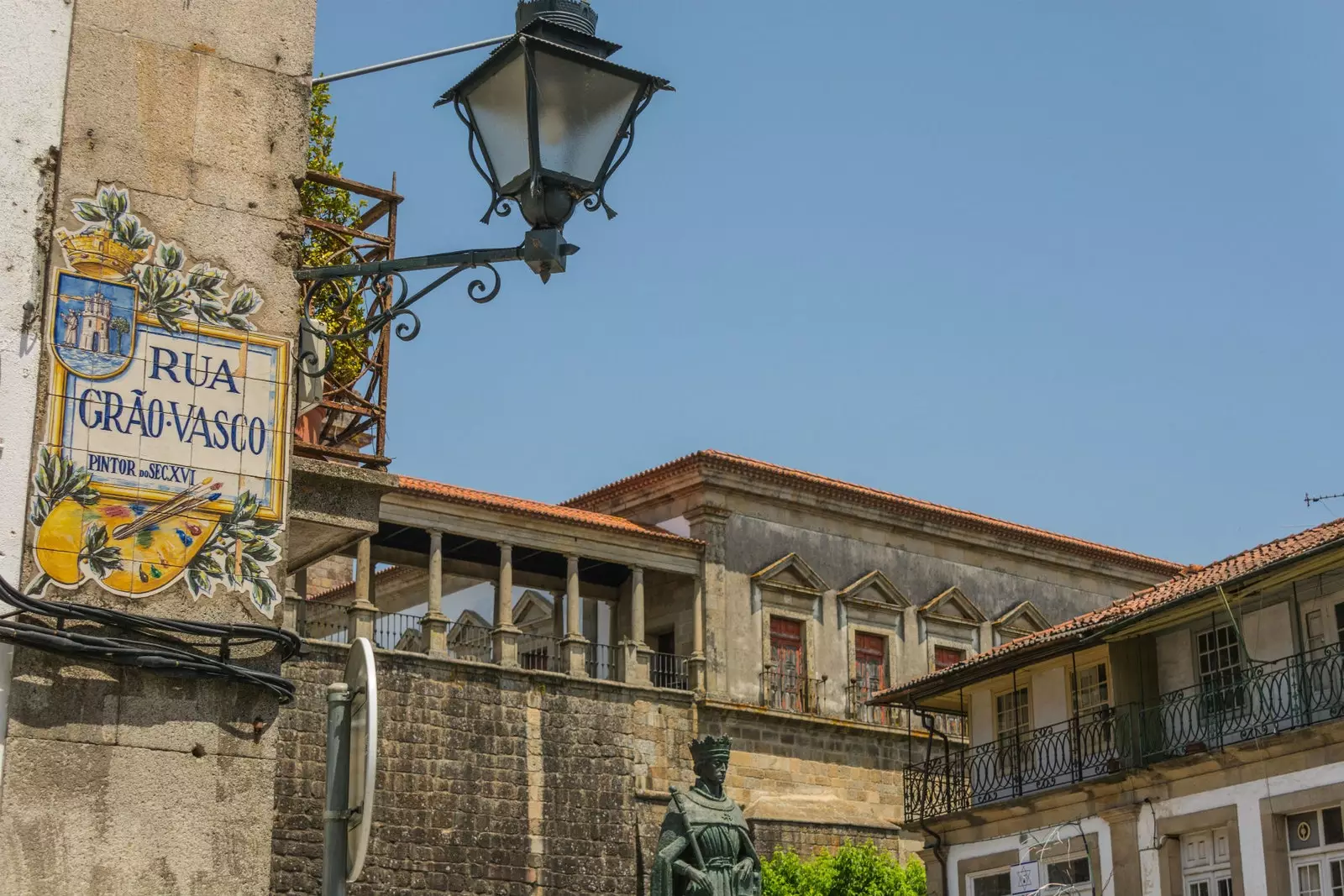
Paseo dos Cónegos from Rua Grão Vasco.
WHERE TO EAT
In other cities of the world, sitting eat on a terrace in front of the cathedral or in its surroundings It is risking falling into a tourist trap, but in Portugal (and it is to be appreciated) it is still possible to choose a restaurant without being guided by any type of reference and, even so, get it right.
One option is Abrigo do Adro (R. Adro 15-1), a up-to-date portuguese cuisine restaurant in which to enjoy with panoramic views of the Atrium a soup of the day, a steak (mostarda, three peppers, or cogumelos) or a table of Portuguese petiscos: cold like a colorful salad, hot like ovos mexidos with alheñar and cogumelos or even vegetarian.
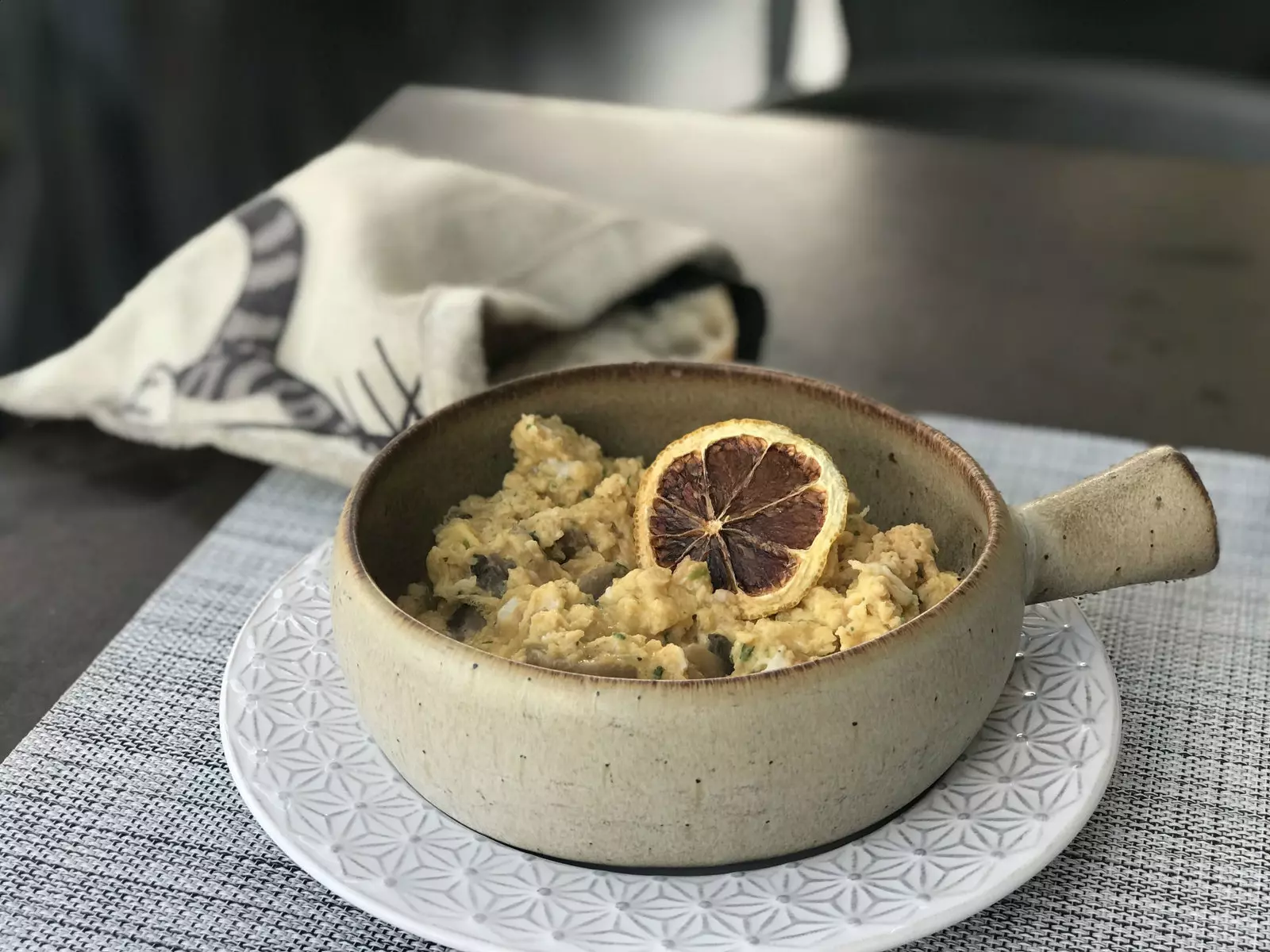
'Ovos mexidos com alheira e cogumelos' at the Abrigo do Adro restaurant, Viseu.
It will be more complicated to find a place in the Colmeia restaurant terrace, whose tables are spread out sheltered by the shade of the trees and the buttresses of one of the sides of the cathedral (R. Ameias 12). traditional cuisine (comfortable as they call it), traditional recipes such as caldo verde, favas com entrecosto, caldeirada de peixe or iscas de figado de cebolada arrive in their sullen and authentic clay dishes.
Also outdoors and in a large pedestrian esplanade we find the terrace of the modern Brooklyn Viseu, a bar that occupies the former Casa da Boneca, an iconic toy store that was open at 28 Praça D. Duarte for more than 130 years.
Today in this pub located in the heart of the historic center of the capital of Beira, the usual game is to drink wines, beers and mixed drinks to the rhythm of jazz, blues, rock and soul (there are live DJs on weekends).
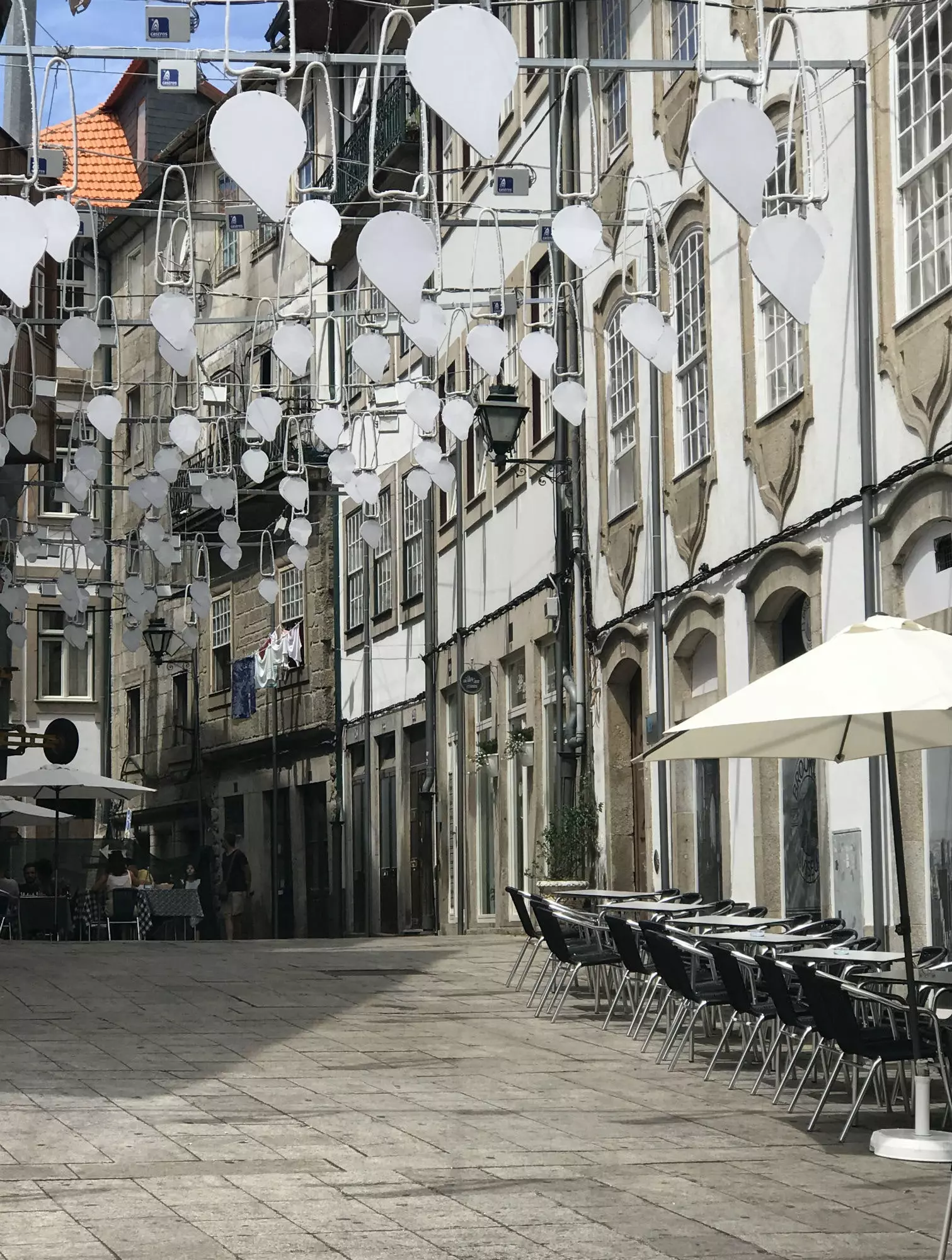
Terrace of the Brooklyn Viseu bar.
WHERE TO SLEEP
A five-minute walk from Parque Florestal do Fontelo (Viseu has large green areas), Pousada Viseu & Charming SPA is a historic hotel that has been able to adapt to the needs of the contemporary traveller. It was in 2009 when the renowned architect Gonçalo Byrne brought the old San Teotónio hospital back to life (and never better said) (1842), one of the oldest in the city (it was promoted by Queen Maria I of Portugal).
Remarkable are its outdoor pool, its covered cloister (converted into a lobby and restaurant), its intact pharmacy (today a Cigar Lounge Bar) and its spa, which occupies what was the old hospital chapel: the entrance is under the choir and where there used to be benches, today there are loungers.
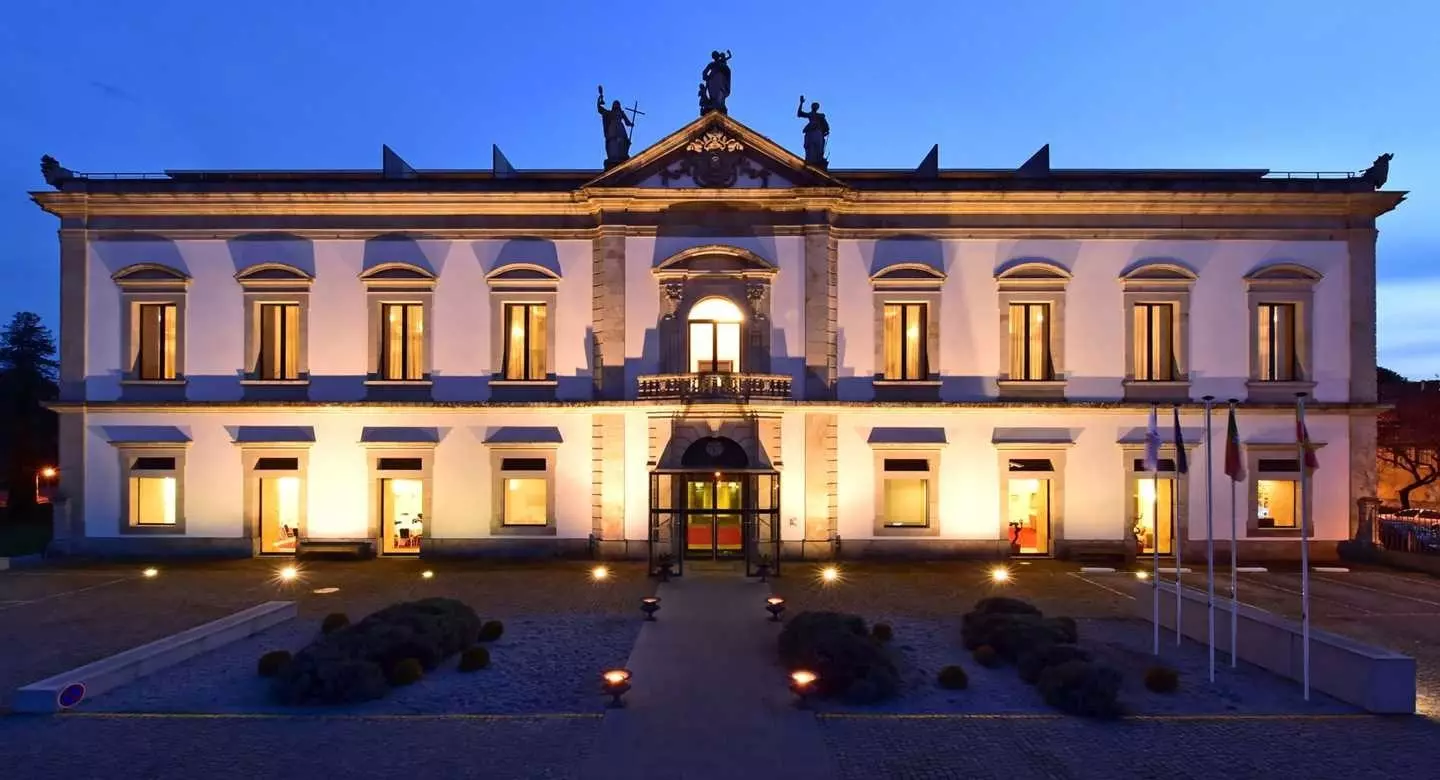
Pousada de Viseu
Noteworthy are its outdoor pool, its covered cloister (converted into a lobby and restaurant), its old and intact pharmacy (today a Cigar Lounge Bar) and its spa, which occupies what was the hospital chapel: the entrance is under the choir and where there used to be benches, today there are loungers.
Completely remodeled, it is striking how well it combines the elegant 21st century decoration of its rooms with the neoclassical style of its original structure. In fact, on the terraces of the suites (some themed with wine motifs from the region) on the top floor, the most modern of all as it is an extension of the building, The three statues of the theological virtues that crown its façade stand imposingly: faith, hope and charity.
Because in few cities like Viseu the modern and the old fit together with such ease... and height! (remember that the city has a funicular that runs in two minutes the 400 meters that separate the Largo da Sé (Cathedral Square) from the Feira de São Mateus).
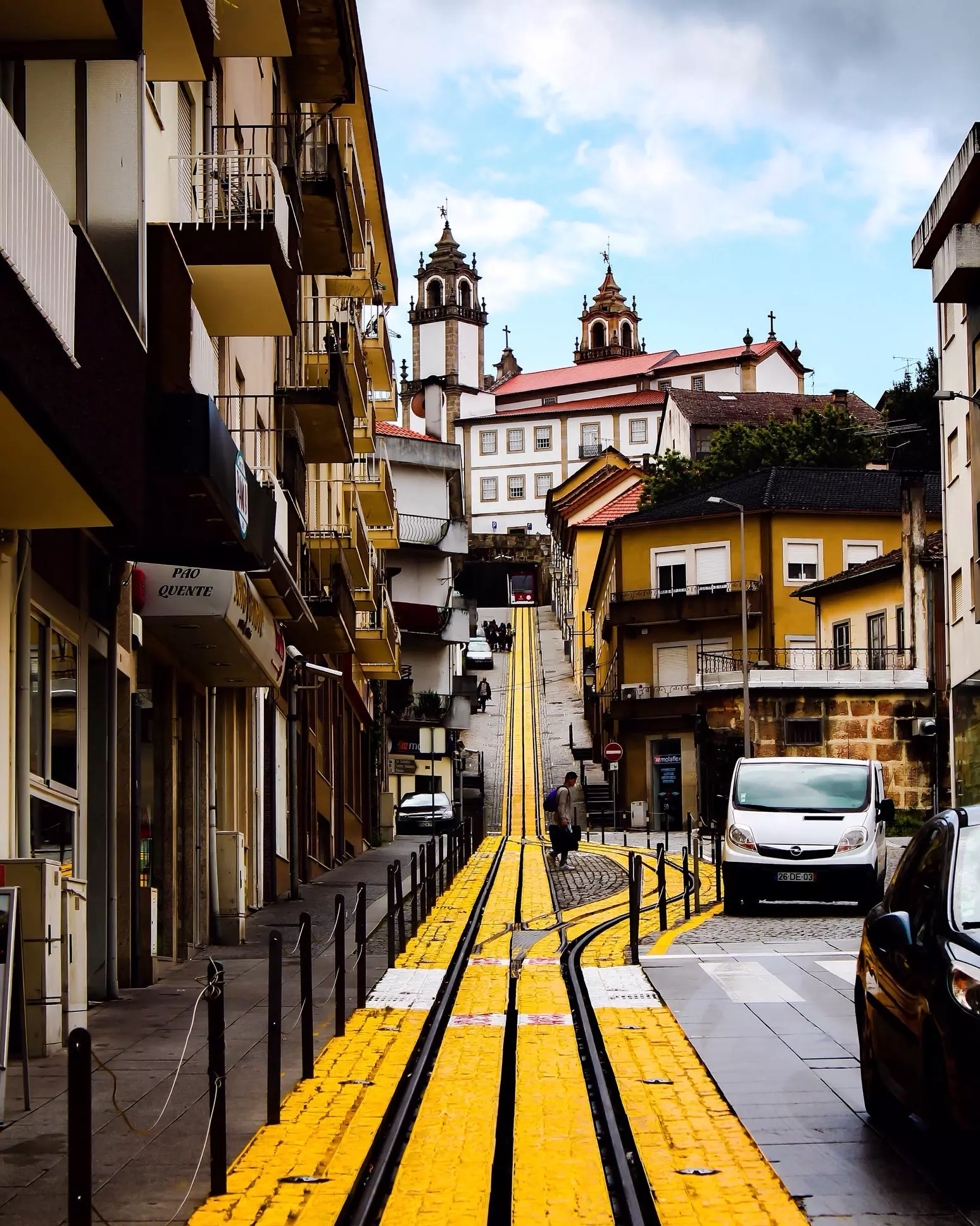
The Viseu funicular reaches the Largo da Sé (Cathedral Square).
